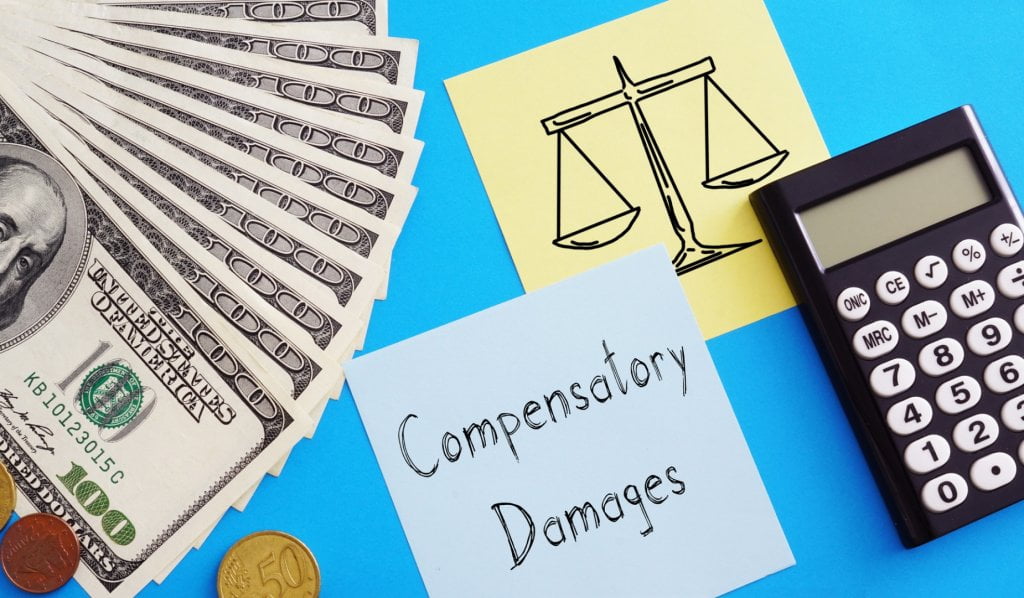Personal injury damages are awarded to plaintiffs who sustain an injury due to another party’s negligence. This court-mandated compensation aims to restore the injured party to their pre-accident condition as much as possible.
There are two main types of personal injury damages: compensatory and punitive. This article will briefly explain each type and highlight their differences.
- Compensatory Damages
Compensatory damages aim to repay the plaintiff for any losses or injuries they have suffered. This type of personal injury damage is awarded in a lawsuit and seeks to restore those affected by an incident to their original condition as much as possible.
Several factors are considered in calculating compensatory damages. As such, it’s best to seek Raphaelson Law’s advice if you’re in New York or hire reputable law firms near you to confirm a valid claim and learn how much legal compensation you deserve.
Generally, compensatory damages can be broken down into two main categories:
- Economic Damages
Economic damages refer to the measurable losses incurred due to personal injury. These include medical expenses, lost income, property damage, and other financial losses.
- Medical Expenses
These include past and future medical costs associated with the injury, such as hospitalization fees, doctor visits, and physical therapies. The injured person may also receive reimbursement for travel expenses while seeking treatment. They may also need to purchase or rent medical equipment such as wheelchairs, crutches, or braces to assist with their recovery.
- Lost Income
Lost income is essential when seeking damages for personal injury, as it can include lost wages and missed opportunities for promotions or bonuses at work. In addition to these direct losses, other types of financial harm that may result from a personal injury are loss of benefits such as 401(k) matching contributions or medical insurance coverage through an employer.

- Property Damage
Property damage is a form of financial compensation that may be sought by victims of an accident or incident that resulted in physical harm. This type of damage seeks to reimburse individuals for any property loss or destruction incurred due to the incident. To receive compensation for property damage, victims must prove that the at-fault party’s actions destroyed their possessions.
Additionally, individuals can pursue compensation for anticipated future medical expenses and lost income related to the injury.
- Non-Economic Damages
Non-economic damage encompasses personal injury damage that can’t be measured financially. Here’s a list of these types of damages:
- Pain And Suffering
This type of damage refers to compensation for any physical or mental anguish caused by an injury. This includes physical pain and emotional distress. Pain and suffering are difficult to quantify, making it challenging for plaintiffs to receive adequate compensation without legal counsel.
- Mental Anguish
This can encompass various psychological distress, from fear and anxiety to depression and guilt caused by an injury. Those who experience mental anguish may feel isolated or overwhelmed and unable to cope with the situation; they may also suffer from sleep disruption or changes in appetite. In some cases, mental anguish can be long-lasting, reducing the quality of life or aggravating physical injuries and disability.
- Loss Of Consortium
This refers to damages awarded to someone who has lost the companionship or services of a family member due to an injury caused by another party. Courts generally grant this damage award in cases where one spouse suffers an injury, resulting in a reduced ability of the other spouse to receive the same level of comfort, care, or support as before. In certain jurisdictions, individuals can also pursue this claim for children if the parent has suffered an injury.
If successful, courts may award compensation for emotional distress, such as sadness or anguish resulting from being deprived of a family relationship. The court may also award monetary compensation for economic losses incurred due to being deprived of a family member’s services, such as household duties and childcare.
- Punitive Damages
Punitive damages, also known as exemplary damages, are personal injury damages awarded to an injured party as a punishment for the wrongdoer’s actions. The purpose of punitive damages is to deter gross misconduct and discourage other entities from doing so.
When considering whether to award punitive damages, the court examines the injury’s severity, including physical and emotional pain and suffering, economic losses, mental anguish, and loss of enjoyment of life.
The court also considers the defendant’s conduct, assessing how reckless or intentional the actions that caused the injury were and any malicious intent from the defendant in causing harm to the plaintiff. Punitive damages are only awarded after establishing that the defendant engaged in gross negligence or intentional wrongdoing.
For instance, a multinational agrochemical company was asked to pay USD$ 1 billion in punitive damages to a couple who’d claimed one of its products caused their cancer. The verdict came after the jury determined that the company acted maliciously and failed to warn buyers about the risks of using its product.
Conclusion
Personal injury damages encompass various types of compensation to address the victims’ losses. Compensatory damages provide economic and non-economic relief, covering financial expenses and intangible harm like pain and suffering. Punitive damages may be awarded in cases of severe misconduct or negligence.
These damages play a vital role in assisting victims in their recovery process, ensuring that they are fairly compensated for injuries caused by the wrongful actions of others. Understanding the types of personal injury damage helps individuals navigate the legal landscape and seek appropriate recourse for their losses.
